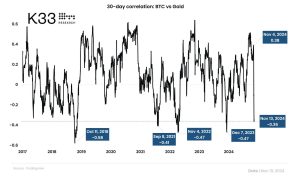The Ethereum Network will take one step closer to its Ethereum 2.0 upgrade with the launch of the Altair Upgrade to the Beacon Chain on October 27.
Altair Upgrade Lighting Up Beacon Chain
The Altair upgrade will introduce light client support, minor patches to incentives, per-validator inactivity leak accounting, increase in slashing severity, and cleanups to validator rewards accounting for simplified state management. However, the primary function of the Altair upgrade will be to introduce the Beacon Chain and its clients to the main network. The beacon chain, which went live in December of last year, is a proof-of-stake chain running on the mainnet parallel to the proof-of-work chain. The plan is to go through the process of a live upgrade to test and prepare codebases before the final merge.
Ethereum developer, Ben Edgington, commented on the upcoming merge,
“The proof of stake upgrade, known as The Merge, will be the biggest upgrade in Ethereum’s history. The Altair upgrade will give us valuable experience to ensure that The Merge goes smoothly when it is ready for deployment in 2022.”
Light Clients And Hard Penalties For Beacon
The Altair upgrade is the first major update to the network, following August’s London hard fork that introduced the EIP-1559. According to core developer coordinator Tim Beiko the Altair upgrade will benefit the system in a three-pronged manner. Firstly, developers will be able to build light clients on the Beacon Chain, which will promote an easier and cost-effective way of interaction with the network. It will remove the need to depend on full node software for validation. Secondly, the stakers will now need to be active to earn a yield. They will need to keep their nodes online and updated, as the upgrade will prioritize penalties for inactivity. Finally, the upgrade will act as a test run to ensure that the network can be upgraded on the Beacon chain efficiently.
What Validators Need To Know
With just 17% nodes left to sync (at the time of reporting), the upgrade will not bring any change for regular coin users or contracts. However, validators would need to download and upload the latest software version, and restart their nodes as usual. Node holders who do not update to the latest version of the software, would not be able to join the upgraded chain. Once the upgrade is achieved, these node holders will be synced with the old chain, which will cause compatibility issues and incorrect reward generation.
Disclaimer: This article is provided for informational purposes only. It is not offered or intended to be used as legal, tax, investment, financial, or other advice.

















